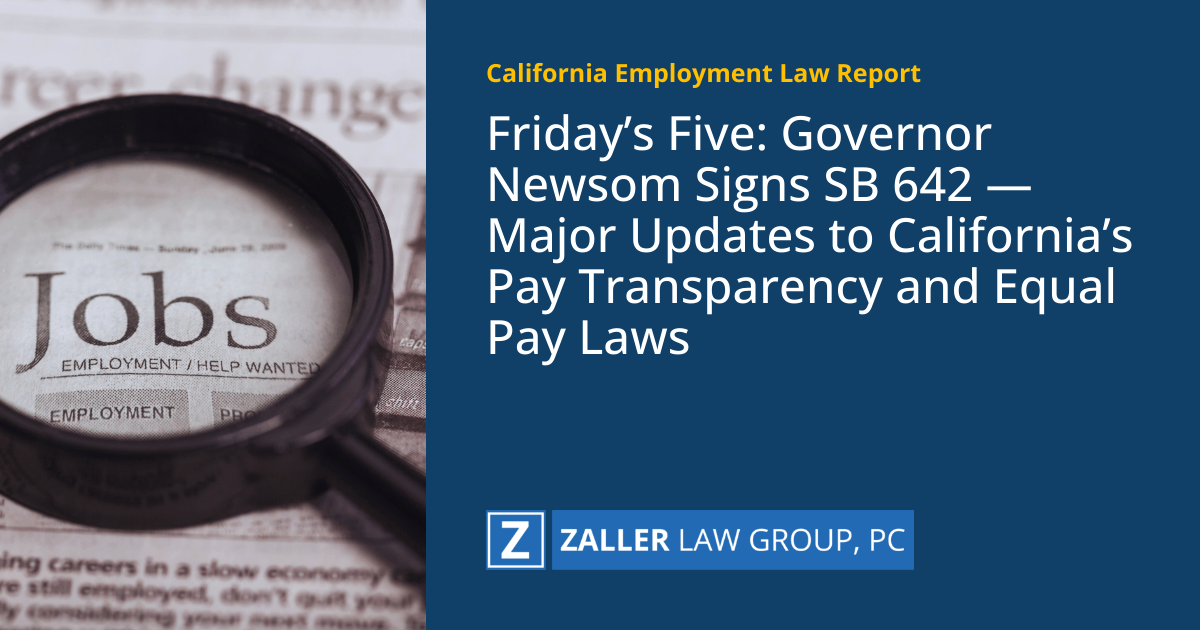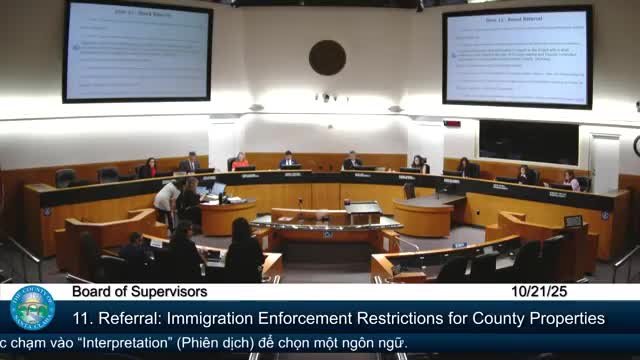Report on California Senate Bill 642 and its Alignment with Sustainable Development Goals
Governor Newsom has signed Senate Bill 642 (SB 642) into law, enacting significant updates to California’s pay transparency and equal pay statutes. This legislative action represents a substantial advancement in aligning state labor law with the principles of the United Nations’ Sustainable Development Goals (SDGs), particularly those focused on equality, decent work, and institutional justice.
Legislative Impact on Sustainable Development Goals
The enactment of SB 642 provides a direct and measurable contribution to several key SDGs. The law’s focus on transparency and equity in compensation serves as a powerful mechanism for achieving global sustainability targets at the state level.
-
SDG 5: Gender Equality
SB 642 is a critical tool for advancing gender equality. By mandating pay transparency and reinforcing the legal framework for equal pay for substantially similar work, the legislation directly targets the systemic causes of the gender pay gap. This promotes economic justice and empowerment for women in the workforce.
-
SDG 8: Decent Work and Economic Growth
The principles of fair and equitable compensation are central to the concept of decent work. SB 642 fosters a labor market where transparency is standard, ensuring that all employees are compensated fairly. This contributes to a more stable and productive workforce, which is essential for sustainable and inclusive economic growth.
-
SDG 10: Reduced Inequalities
The law serves as a direct measure to reduce income inequalities. By requiring employers to disclose pay scales and justify wage differentials based on objective criteria, SB 642 helps to dismantle discriminatory pay structures that disproportionately affect women and other marginalized communities, thereby promoting a more equitable distribution of economic resources.
-
SDG 16: Peace, Justice, and Strong Institutions
This legislation strengthens the institutional framework for labor rights and justice in California. It enhances legal accountability for employers and provides clear, enforceable standards for pay equity. By creating more transparent and just workplaces, SB 642 reinforces the rule of law and builds trust in public institutions.
Key Provisions of SB 642
The major updates introduced by the new law are designed to create a more transparent and equitable employment landscape. Key components include:
- Enhanced requirements for employers to disclose pay scales in all job postings.
- The right for current employees to request the pay scale for their position at any time.
- Expanded pay data reporting obligations for employers to state agencies to identify and address systemic wage gaps.
- Strengthened anti-retaliation protections for workers who exercise their rights under the law.
Conclusion
California’s SB 642 is a landmark piece of legislation that operationalizes key principles of the Sustainable Development Goals within state employment law. By championing pay transparency and equal pay, the law not only protects workers’ rights but also establishes a foundation for a more equitable, just, and sustainable economy in California.
Analysis of Sustainable Development Goals in the Article
1. Which SDGs are addressed or connected to the issues highlighted in the article?
-
SDG 5: Gender Equality
- The article discusses “equal pay laws,” which is a fundamental component of achieving gender equality. Laws like SB 642 are designed to eliminate wage discrimination based on gender, directly contributing to the economic empowerment of women.
-
SDG 8: Decent Work and Economic Growth
- The focus on “equal pay” and “pay transparency” aligns with the goal of achieving decent work for all. Ensuring equal pay for work of equal value is a key aspect of fair and favorable conditions of employment.
-
SDG 10: Reduced Inequalities
- Pay transparency and equal pay laws directly target the reduction of economic inequalities within a society. By addressing wage gaps, SB 642 aims to create a more equitable distribution of income, particularly between genders.
-
SDG 16: Peace, Justice and Strong Institutions
- The article highlights the signing of a law (SB 642) by a governor, which represents the creation and enforcement of non-discriminatory laws by effective and accountable institutions. This legislative action strengthens the legal framework for promoting equality and justice.
2. What specific targets under those SDGs can be identified based on the article’s content?
-
Under SDG 5 (Gender Equality):
- Target 5.1: End all forms of discrimination against all women and girls everywhere. The law SB 642 is a legal instrument aimed at ending wage discrimination.
-
Under SDG 8 (Decent Work and Economic Growth):
- Target 8.5: By 2030, achieve full and productive employment and decent work for all women and men… and equal pay for work of equal value. The article’s central theme of “equal pay” directly corresponds to this target.
-
Under SDG 10 (Reduced Inequalities):
- Target 10.3: Ensure equal opportunity and reduce inequalities of outcome, including by eliminating discriminatory laws, policies and practices and promoting appropriate legislation. The article describes the signing of SB 642, which is an example of “promoting appropriate legislation” to reduce pay inequality.
-
Under SDG 16 (Peace, Justice and Strong Institutions):
- Target 16.B: Promote and enforce non-discriminatory laws and policies for sustainable development. The enactment of SB 642 is a direct action of promoting and enforcing a non-discriminatory law related to pay.
3. Are there any indicators mentioned or implied in the article that can be used to measure progress towards the identified targets?
-
Implied Indicators:
- Indicator 5.1.1: Whether or not legal frameworks are in place to promote, enforce and monitor equality and non-discrimination on the basis of sex. The article’s entire subject, the signing of SB 642 into law, confirms that such a legal framework is being put in place in California.
- Indicator 8.5.1: Average hourly earnings of female and male employees, by occupation, age and persons with disabilities. While not explicitly mentioned, the goal of “equal pay” and “pay transparency” laws is to reduce the gap in average earnings between genders, which is what this indicator measures. The effectiveness of SB 642 would be measured by changes in this indicator over time.
| SDGs | Targets | Indicators |
|---|---|---|
| SDG 5: Gender Equality | Target 5.1: End all forms of discrimination against all women and girls everywhere. | Indicator 5.1.1 (Implied): The article discusses the creation of a legal framework (SB 642) to enforce non-discrimination in pay. |
| SDG 8: Decent Work and Economic Growth | Target 8.5: Achieve full and productive employment and decent work for all… and equal pay for work of equal value. | Indicator 8.5.1 (Implied): The law’s focus on “equal pay” directly aims to influence the average hourly earnings of female vs. male employees. |
| SDG 10: Reduced Inequalities | Target 10.3: Ensure equal opportunity and reduce inequalities of outcome… by promoting appropriate legislation. | The existence and enforcement of SB 642 serves as a qualitative indicator of action taken to reduce inequalities. |
| SDG 16: Peace, Justice and Strong Institutions | Target 16.B: Promote and enforce non-discriminatory laws and policies for sustainable development. | The signing of SB 642 into law is a direct measure of this target being implemented. |
Source: californiaemploymentlawreport.com







